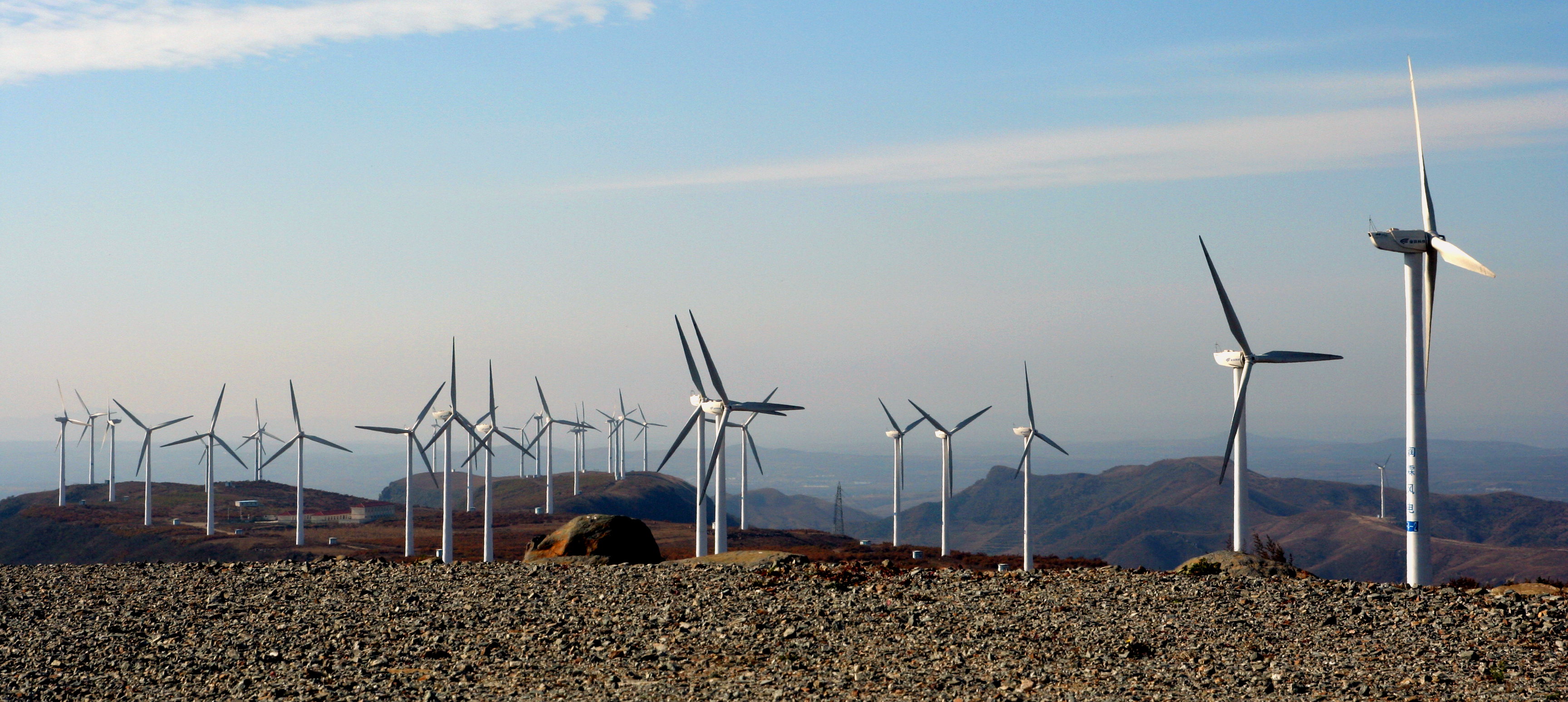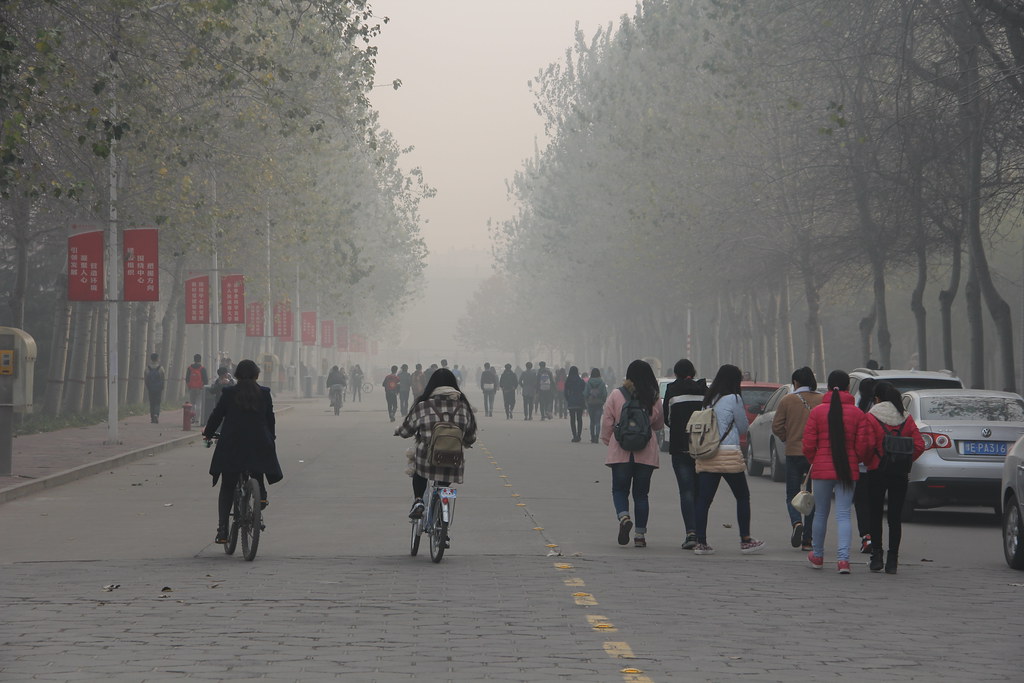China: Rising Leader in Climate Change Initiatives
 Tangshanpeng Wind Farm
Tangshanpeng Wind Farm
In light of Donald Trump becoming the President-elect of the United States, much of what the U.S. had previously promised to do to take steps towards renewable energy and lowered carbon emissions, may be dismantled. This would leave China as the leader in climate change mitigation, especially in the developing world.
Prior to his life as a Presidential candidate, Trump completely denied the validity of the science behind climate change, and denounced the idea that humans were causing such alarming global changes. By the time he became the Republican nominee for President, he had reverted from that stance only slightly, claiming that climate change was not a main problem of today’s generation, and that humans may have some effect on global change, but not a large one. This is in great contrast with President Obama, who ran his administration on the premise that climate change was the great challenge of this generation. Contrary to Obama’s plans for climate action, such as establishing carbon pollution standards for power plants, Trump’s outlined plan for energy and the environment is very vague and in certain areas, contradicts itself. For instance, Trump plans to increase U.S. gas and coal production, both of which have been proven to be detrimental to the environment. Yet, taking an unusual stance for a Republican, he also plans to keep public land in the hands of the government so that the environment and wildlife can be protected. In another contradictory stance, he says that attaining clean water and fixing dyer drought situations is a top priority for him, but he also plans to withdraw from the Paris Agreement, meaning he will not fulfill promises on the United States’ part to reduce greenhouse gas emissions and pursue renewable energy.
The United States is poised to take a back seat role in climate action for at least the next four years of the Trump presidency. They will not be innovating new energy technologies or creating policies to lower fossil fuel consumption, unlike China who is ready to continue to reduce coal consumption and be at the forefront of energy policy and innovation. This breaks away from the two country’s traditional positions in the fight against global warming. For most of the 20th century, the United States primarily consumed oil and coal, both of which have detrimental effects on the environment. It wasn’t until the 1970s, when oil prices skyrocketed, that the U.S. began to develop environmentally conscious energy policies that encouraged movement away from carbon-based energies. Similarly, China has historically been highly dependent on natural gas and especially coal. China surpassed the United States in 2007 for most greenhouse gas emission. However, China has been slower to implement climate change policy via their Five-Year plans that evolve every cycle. The first plan was aimed at increasing industry, but each plan has been more concrete and ambitious with environmental and energy goals than the previous. They are currently in their 13th Five-Year plan.
China has taken many new steps towards climate action recently, attempting to turn its history around. China has promised to reach its peak in carbon emissions by 2030, but recent data on China’s decreased coal consumption in 2014 has led many scientists to think that they may have reached their peak coal consumption in 2013. Coal consumption accounts for 83% of China’s carbon emissions, so continued decreasing coal consumption could lead to China reaching its peak carbon emissions long before their target year. As part of reducing coal consumption, China is now the world’s biggest investor in renewable energy and there is a lot of data that shows it is paying off. For instance, China has the highest solar energy, wind energy, and hydropower capacity in the world. Also, one in every four units of power that China produces now comes from a renewable source. In terms of policy, both China and the U.S. signed onto, and most importantly ratified, the Paris agreement in 2015. This is extremely important because they are first and second, respectively, for emitting for the most greenhouse gases in the world. This ties both countries to many goals including keeping global temperature rise below 2 degrees Celsius and making the world carbon neutral between 2050 and 2100.
This advancement is controversial because while China is on the forefront of renewable energy, they are simultaneously increasing their coal capacity. This seems contradictory, but three important things must be noted about China’s increase in coal capacity. First, China is switching to cleaner coal, which although is still not great, it’s a huge improvement and something the United States has not done. Secondly and most importantly, China is increasing their coal capacity, but they are not using anywhere near the entirety of their coal capacity. Third, despite the fact that coal production stimulates local economies, China announced in July that they are in fact halting the construction of 30 large coal-fired power plants. Meanwhile, Trump has made the American coal industry a promise to renew and enlarge their presence in many regions that have been struggling economically.
Thus, China takes the lead in climate action for the foreseeable future. It is crucial that China reaches the goals they have set because the U.S. most likely will not and because they are the two biggest emitters of greenhouse gases, that is going to have detrimental environmental effects. If China can stay on course though, all hope may not be lost and global efforts could still make advancements on climate action, reduction of greenhouse emissions, and renewable energy, in spite of the Trump Presidency.


